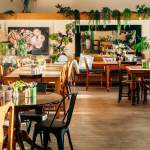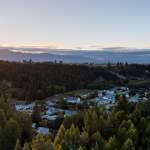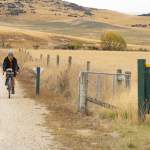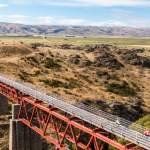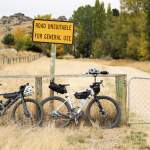TRAIL TOWNS | RANFURLY
words and images by Geoff Marks
“Before you ask”, says Shirley with a wry grin, “No, the famous Ranfurly Shield rugby trophy – or Log o’ Wood - was not named after the town”.
“If I had a dollar for every time I was asked about that shield” … she muses.
“But the town and the shield were both named after the 5th Earl of Ranfurly, who was the Governor of New Zealand in 1901 at about the same time as the Otago Central Railway reached the township”, explains Shirley.
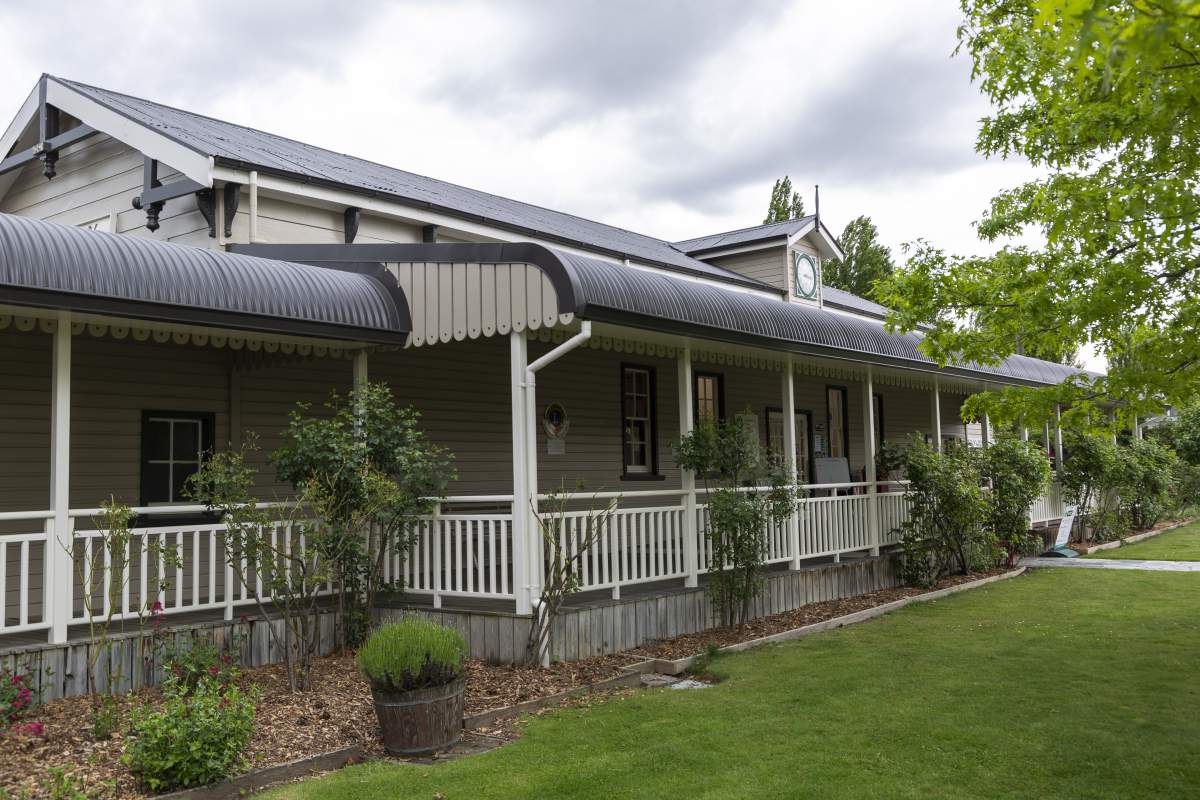
The Ranfurly isite is located in the refurbished old railway station
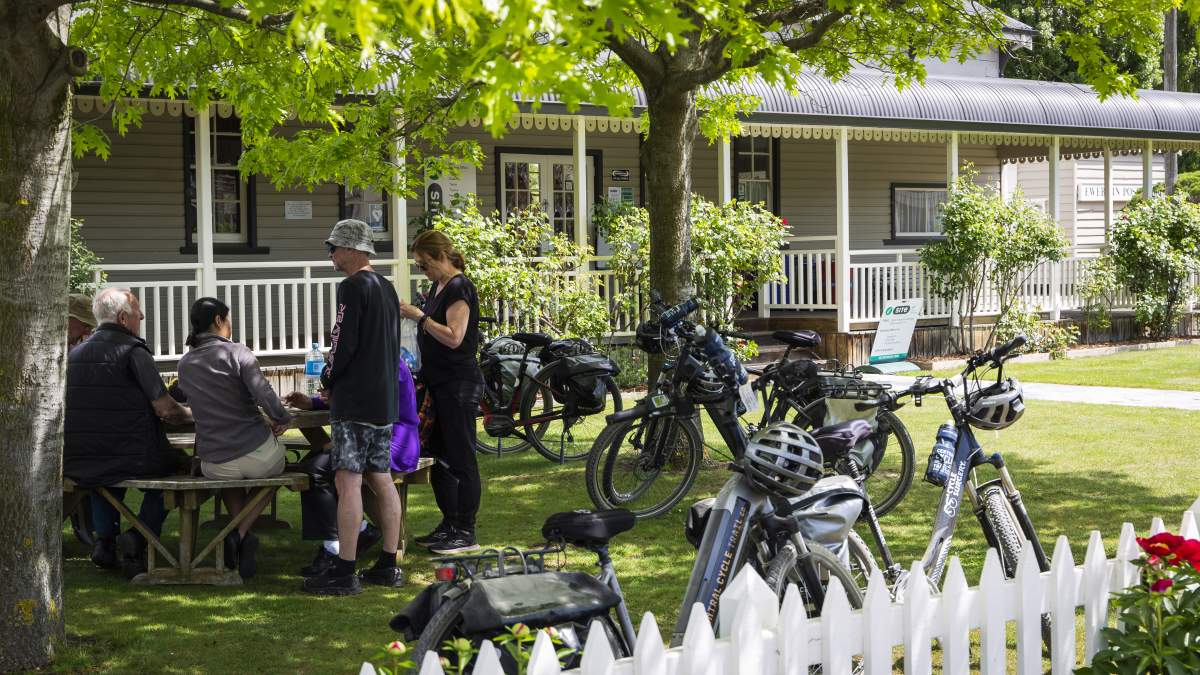
The isite garden offers welcome shade from the sun for cyclists and picnics are encouraged!
Shirley runs the Ranfurly isite Visitor Information Centre, and there’s not much about the town or surrounding Māniatoto region that she doesn’t know. The isite is the ideal place to start when exploring the region and has a fascinating small museum dedicated to Ranfurly’s rich history and heritage.
Located in the old railway station, the isite also the best place for cyclists on the Otago Central Rail Trail to park up for coffee or lunch and spend a few hours exploring this quintessential New Zealand small town. Picnics on the lawn at the railway station are actively encouraged and most days cyclists can be seen encamped under the shade of the mature trees enjoying a break from their journey.
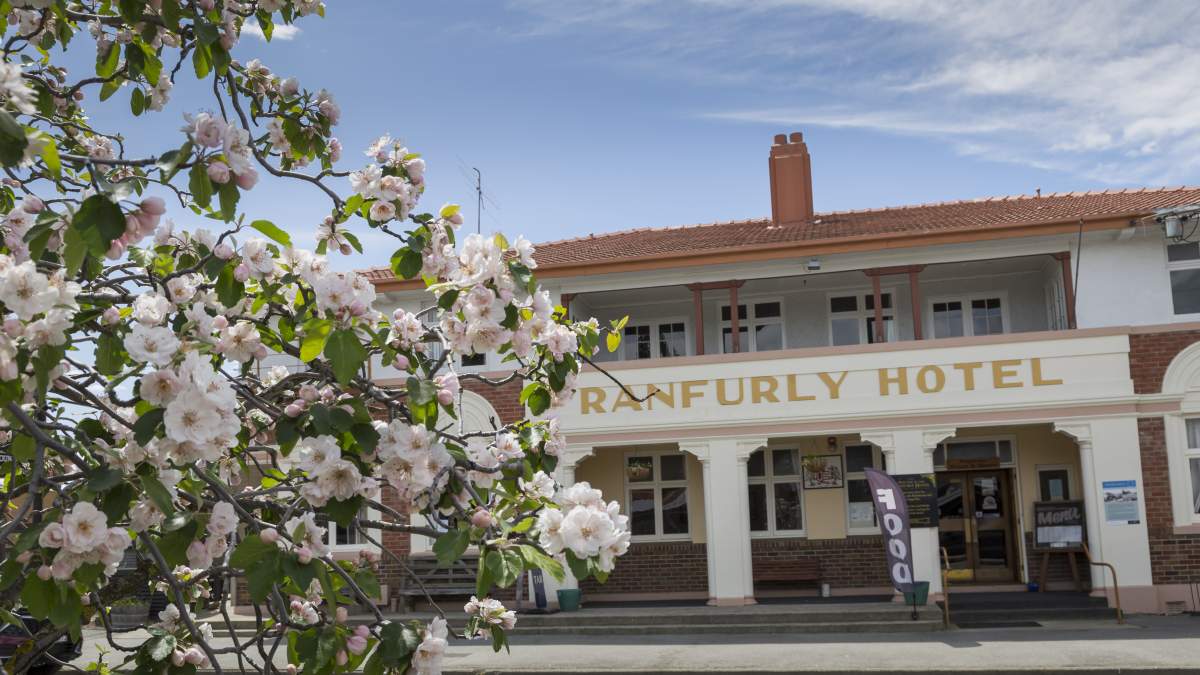
The Ranfurly Hotel in art deco style.
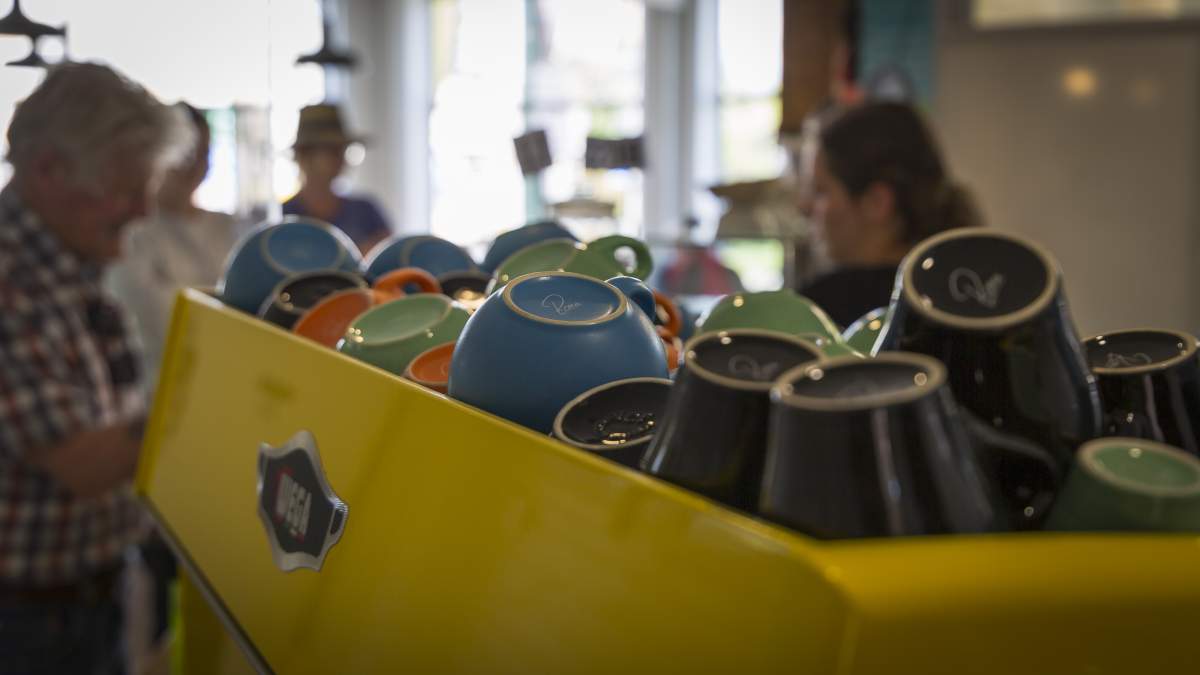
Good coffee is an essential ingredient for any cyclist and the Maniototo Cafe makes a fine brew.
“Ranfurly was originally named Eweburn by John Turnbull Thomson who was the Chief Surveyor of Otago in the 1850’s” explains Shirley. “Eweburn was one of many farmyard names bestowed by Thomson on dozens of creeks, streams and other locations in the district”.
Shirley’s charming story behind the place names of the region is worth recounting…
As local legend would have it, Thomson’s quirky farmyard naming convention was the result of a disagreement with the New Zealand surveying authorities of the time. Apparently, Thomson – of Northumbrian descent - originally intended to give either classical or traditional Māori names to many places, but these names were refused. By way of a protest, Thomson opted to give more colloquial Northumbrian names to them, often in the form of a farm animal and in the distinctive Northumbrian dialectic.
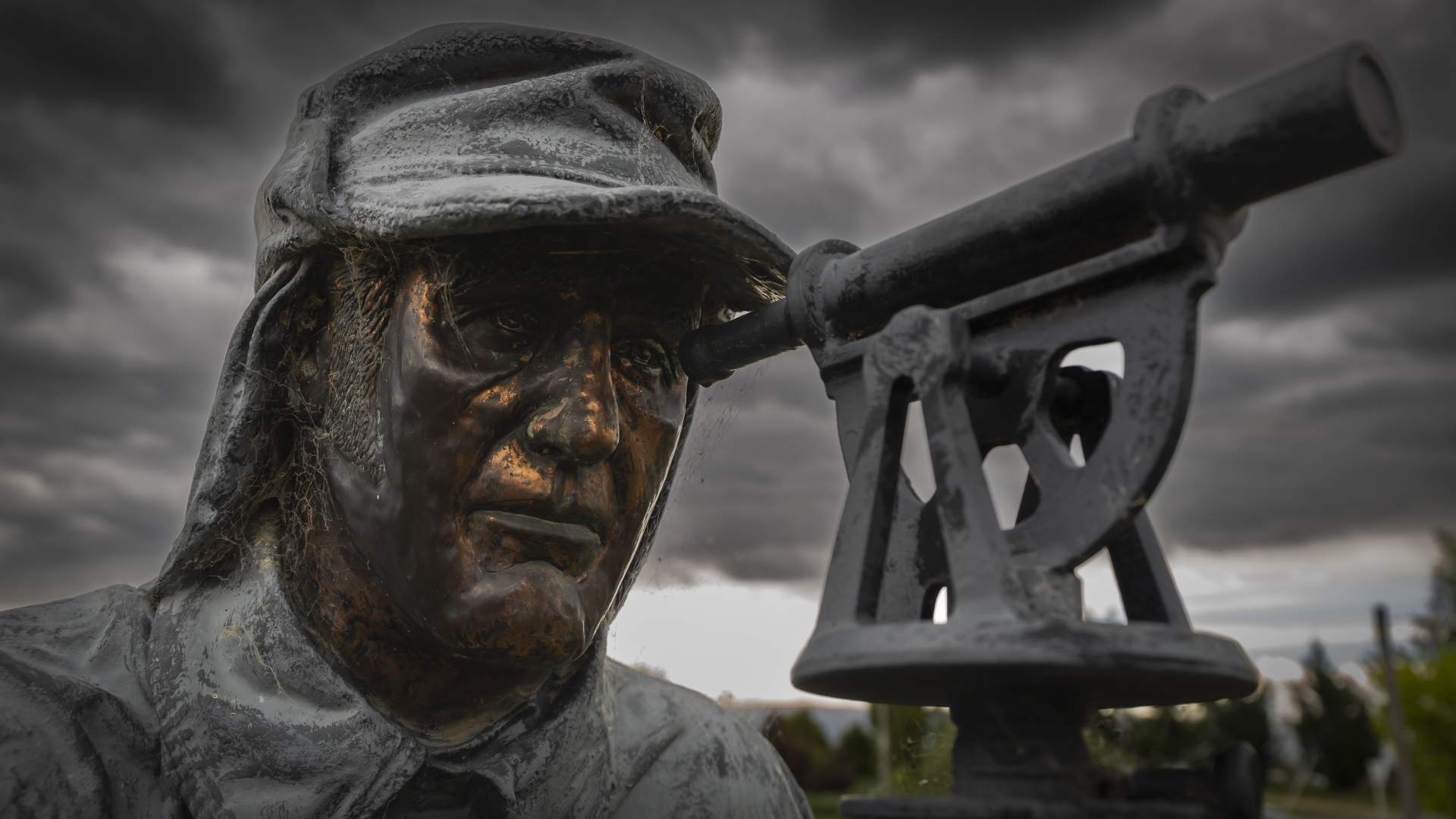
Today, one of Thomson’s most enduring legacies is that the Maniatoto region retains numerous place names such Hoggetburn, and Wedderburn [Wetherburn]. In fact, the area is still occasionally referred to as "Thomson's Barnyard" or the "Farmyard Patch".
With the arrival of railway, the freshly christened town of Ranfurly became an important service-centre for the rural community, experiencing a building boom. However, in the 1930’s a series of suspicious fires destroyed many of the town’s most important buildings, which were subsequently rebuilt in the popular Art Deco style of the period.
Whilst fashions changed and Art Deco faded in New Zealand, Ranfurly continued to build in the style throughout the 1950s and 1960s and today around forty Art Deco buildings can be seen in the town. A dedicated walking tour around Ranfurly to see these buildings is highly recommended by Shirley, and includes a visit to the small Art Deco Museum.
Located in the iconic Centennial Milk Bar building, the museum is hosted by volunteers from the community and includes displays of local art and crafts which are also for sale.
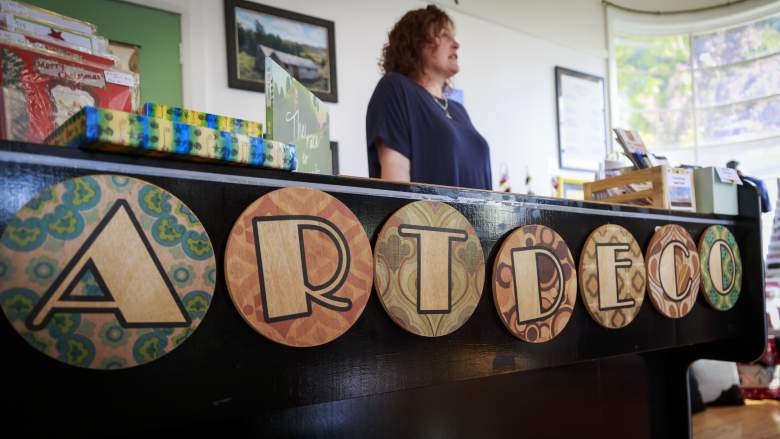
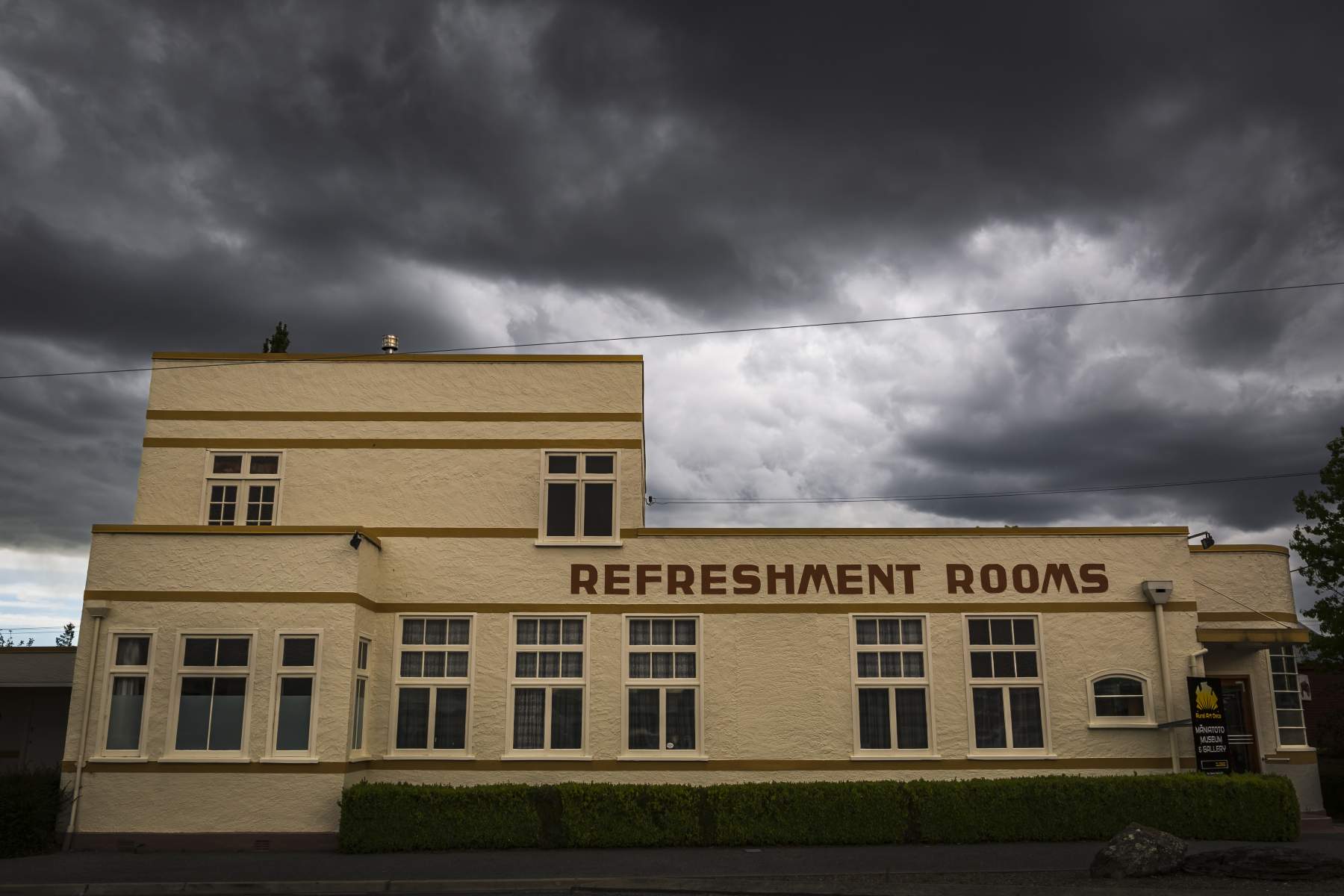
The Centennial Milk Bar building is now home to the Ranfurly Art Deco Museum, which is staffed by volunteers from the community.
There must have been something in the Maniatoto water during this period because at around the same time local high-country farmer, Eden Hore, began curating the largest collection of astonishing haute couture fashion in New Zealand. The story of this expansive and magical collection of high fashion and its location in the isolated and raw high country of Central Otago, are at the heart of the new Eden Hore Central Otago initiative.
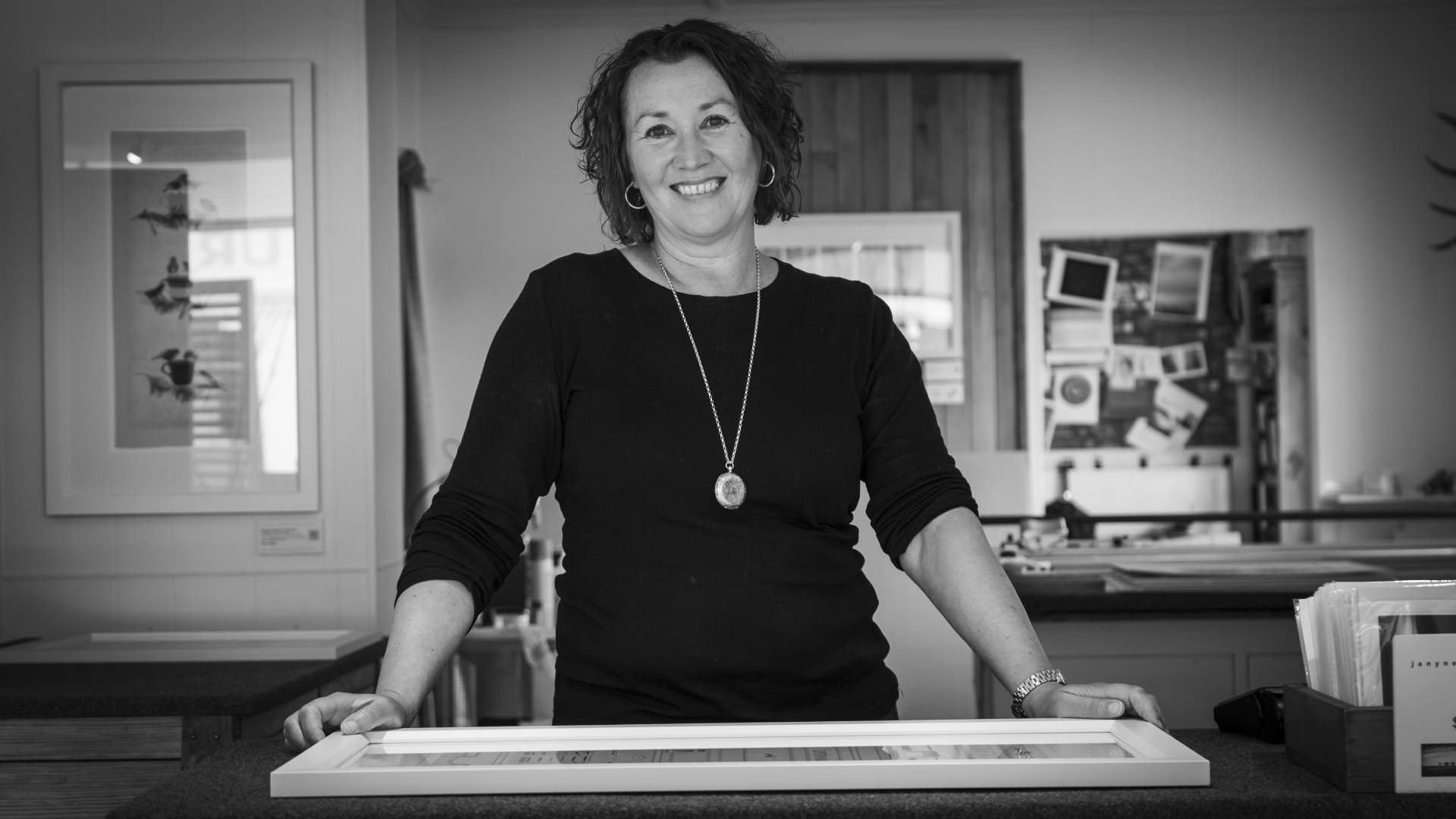
The landscape of the Maniatoto continues to inspire artists to this day. Along the Art Deco walk and opposite imposing Ranfurly Hotel, you’ll be drawn to the gallery of award-winning local photographer and artist Janyne Fletcher.
Janyne has had a long connection with photography and she has been inspired to branch out from a traditional photography business to the area of creative fine art and landscape photography. Janyne edits, prints and frames all of her own work and she regards this process of “playing” with different media, mounts and framing as an integral part of her creative process.
Trail Hub spent an afternoon with Janyne and picked her brain about how to get the perfect Central Otago landscape photo, you can read her tips for landscape photography here.
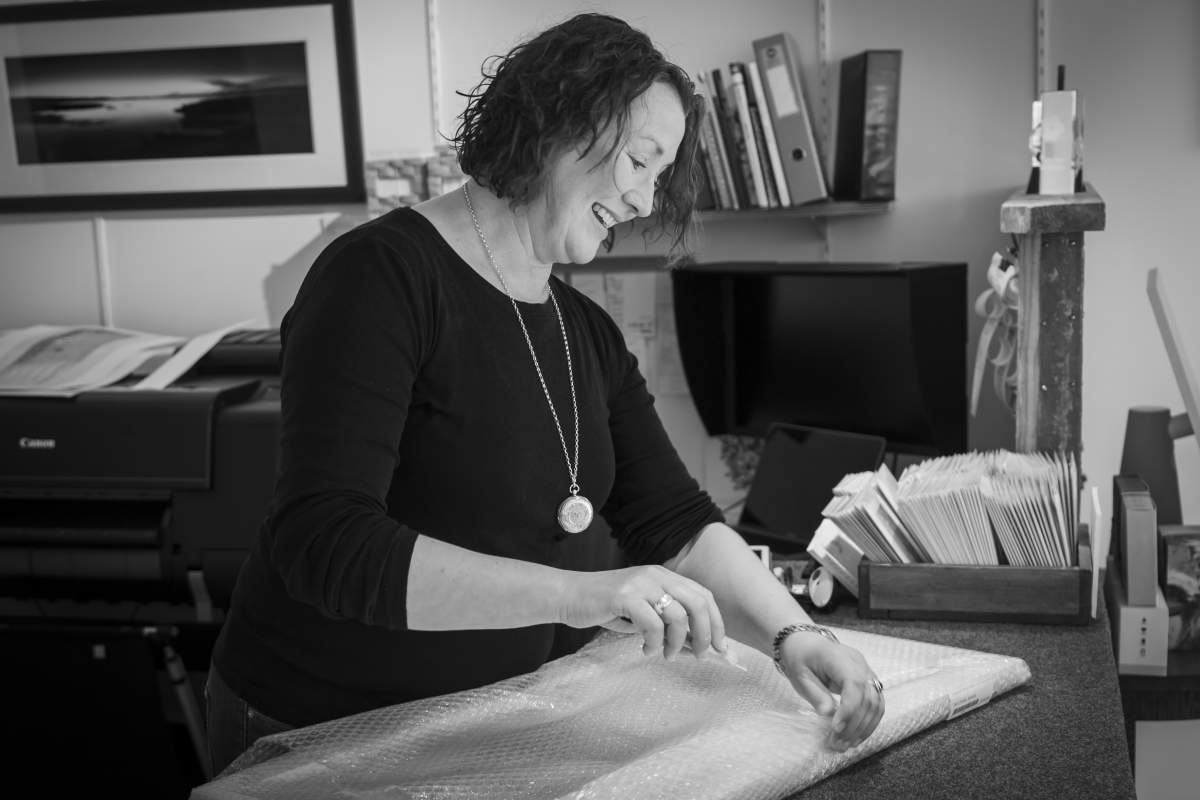
Janyne at work in her Ranfurly gallery.
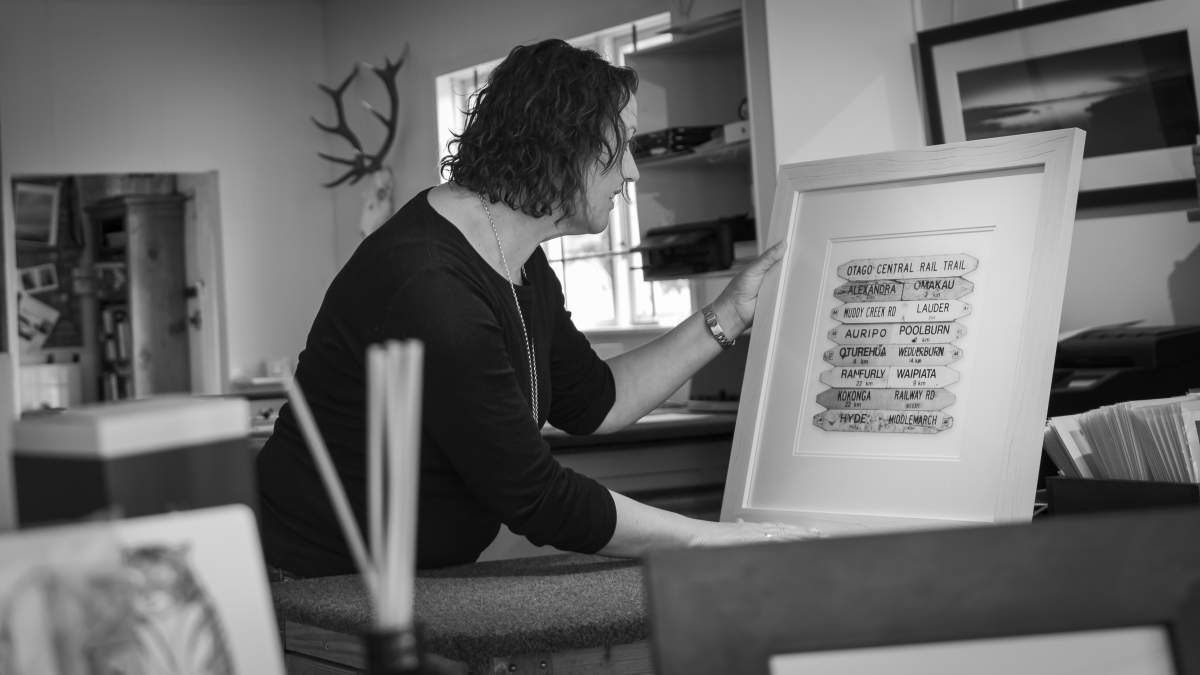
Behind Janyne’s gallery and a short stroll along the Rail Trail, you’ll find something rather unexpected…
The Sun.
Not literally, but a scale representation of the star which is part of the Otago Central Interplanetary Cycle Trail. The brainchild of Ian C Begg, the grandson of John C Begg, the co-founder of Dunedin’s Beverley-Begg Observatory, the Interplanetary Cycle Trail is a virtual journey through time and space!
Together with the boffins at Otago Museum, the solar system has been mapped out onto the Otago Central Rail Trail and shrunk by a factor of one hundred million to one. The model is represented by beautiful sculptures of the planets along the trail and accurately reflects the size of the sun, planets and the moon, and the distances between them.
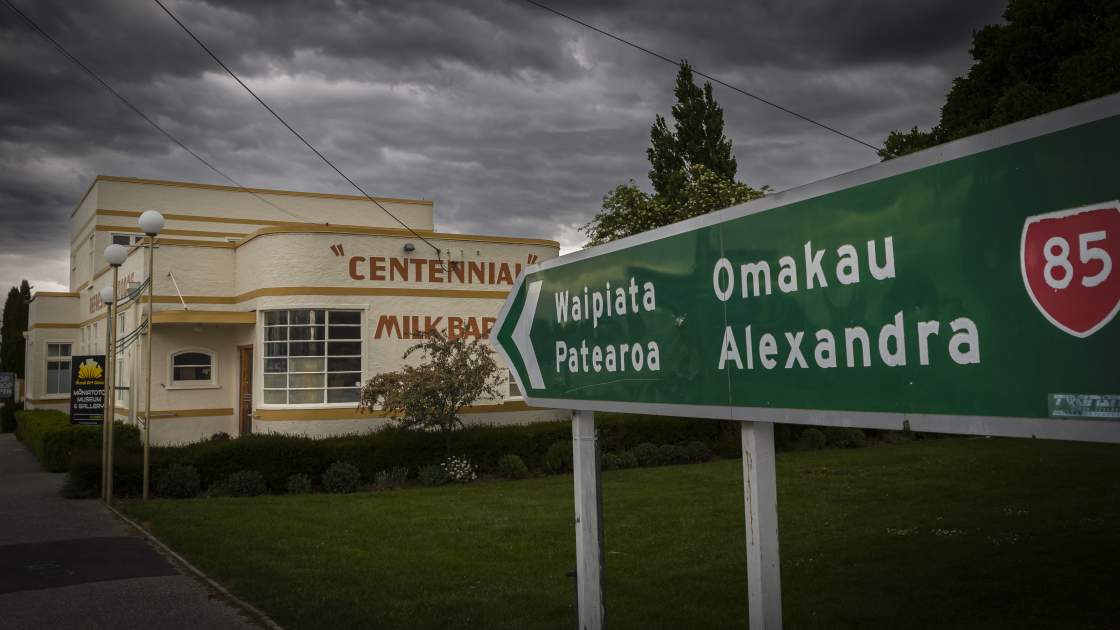
And the centre of our universe, I hear you ask?
Well, Ranfurly of course! (Where the sun is depicted).
You can’t help but think that surveyor Thomson would have approved, and you certainly won’t get any argument from the locals…
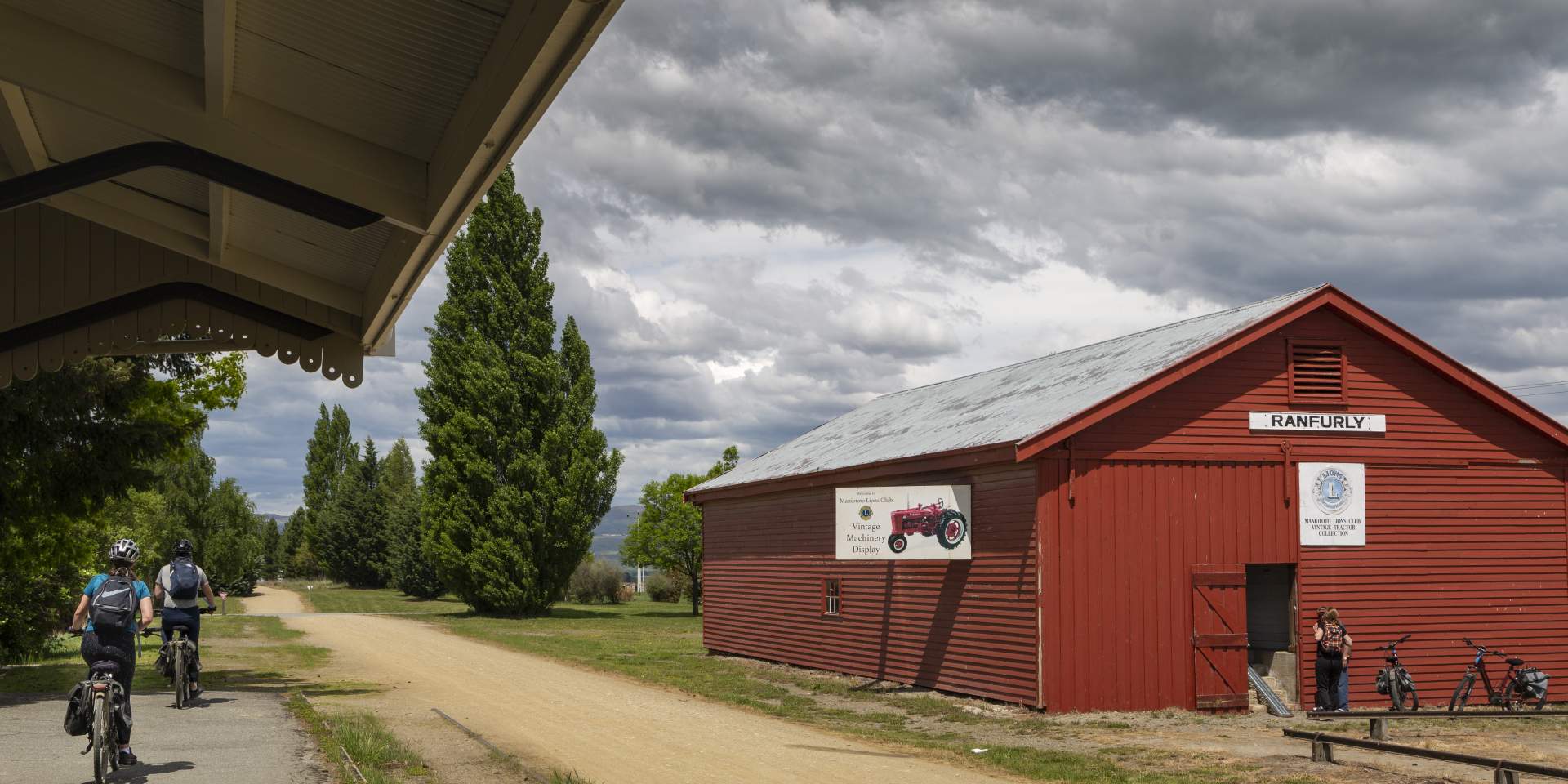
Cyclists disembark onto the Rail Trail at Ranfurly Railway Station

Related Stories
-

Otago Central Rail Trail Pub Guide
A guide to the pubs along the Otago Central Rail Trail
Read more about Otago Central Rail Trail Pub Guide -

Best Bakeries in Otago
From cinnamon scrolls to cheese rolls - a guide to the best trailside bakeries in Otago.
Read more about Best Bakeries in Otago -

Neat Trail Places
An insider's guide to the neatest places along Central Otago's bike trails.
Read more about Neat Trail Places -

Best Things to do in Naseby
6 of the best things to do in Naseby.
Read more about Best Things to do in Naseby -

25 Years On Track
The old and the new - celebrating 25 years of the Otago Central Rail Trail
Read more about 25 Years On Track -

-

Beginners Guide to the Otago Central Rail Trail
A beginner's guide to the Otago Central Rail Trail
Read more about Beginners Guide to the Otago Central Rail Trail -

Reclaiming Wild
Two gutsy girls on an epic bikepacking mission to celebrate their 50th birthdays.
Read more about Reclaiming Wild












